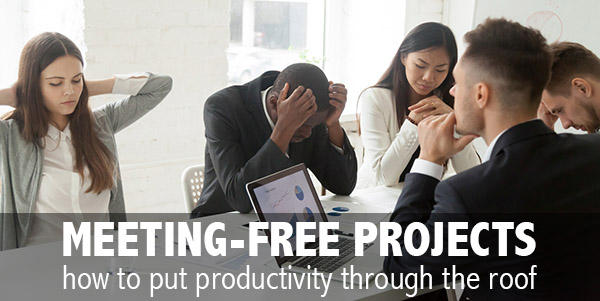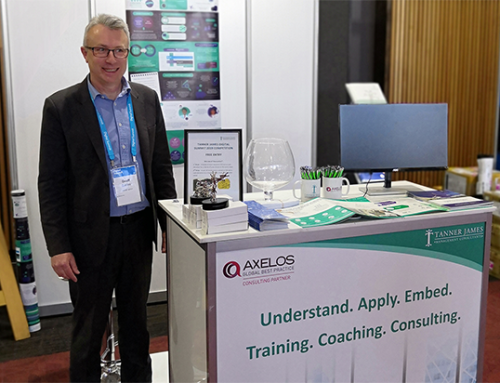Late last year I wrote a blog about a simple way to double the transformation and implementation capacity of the APS overnight.
I would now like to offer another way to dramatically increase productivity – by never having any meetings on your project.
Meetings defined
A quick Google search gave me the following definitions:
- an assembly of people for a particular purpose, especially for formal discussion
- a situation when two or more people meet, by chance or arrangement.
There are many other definitions, but they are all very similar. These are fine for the purposes of this blog.
Have you ever been here?
You’re sitting at your desk, and someone wanders over for an impromptu discussion. A third person joins in. It isn’t long before someone says “we need a meeting on this”, and the die is cast. You all know the pattern from here:
- The meeting will be an hour long (or 30 minutes if you have a busy senior executive involved);
- Finding a mutually convenient slot will be problematic – it is not uncommon for it to be a week or more away;
- Some participants won’t know what the meeting is about. So an agenda and usually papers will need to be prepared.
- Protocol says the information should go out in advance. When it does, a multi-way email exchange ensues, which takes a great deal of time but contributes nothing useful.
- The meeting has to be postponed – someone is sick, or the most senior person attending has something else “come up”, and they “need” – (I believe the word they ought to use is choose) to move it.
Three weeks later after lengthy email exchanges about both the content and timing, the meeting happens. There are good meeting and there are bad meetings, but it might look something like this:
- No-one keeps a proper grip on the agenda and timing;
- Half the participants have tablets or laptops open and spend more time looking at their screen than making eye contact;
- The conversation is superficial – one or two people don’t really listen, they simply look for a gap when they can talk; others who have a powerful contribution to make don’t speak up because they don’t feel it is their position to do so;
- Executives take phone calls mid-meeting and leave early because they have another meeting to attend.
You leave, feeling somewhat deflated, and head back to your desk. Within 6 minutes, someone wanders over for an impromptu discussion…
What’s in a name?
How did we end up here? Why do we behave like this in projects?
In my view it’s all about the name. Meetings are ubiquitous in any workplace. Each organisation has its own culture, and that reflects in the way it conducts meetings. If you are running a project in an organisation, the way the project runs its meetings will inevitably be a direct reflection of the way the organisation runs its meetings. In the APS formal meetings are a very necessary part of normal operations, however as a result undue formality becomes the norm in all meetings, when it isn’t necessary or helpful.
How can this be fixed? Just think about your personal live with your family and friends:
- “I wouldn’t mind something to eat” – “lets have a meeting”
- “I’d like to do something romantic” – “lets have a meeting”
- “We need to buy a new washing machine” – “lets have a meeting”
- “What do you want to do at the weekend?”- “lets have a meeting”
- “We must start thinking about our overseas trip” – “lets have a meeting”
Said no-one ever!! Instead, you just have a chat, a discussion, right then and there or at a time that suits all parties. It doesn’t take an hour (or even 30 minutes), it doesn’t require an agenda and papers, and people speak freely and openly. Because they don’t think of it as a meeting.
So drop the name meeting, focus on the purpose, and let the project chats and discussions flow!
Do you agree?
Please comment on the blog itself or via LinkedIn.
Feel free to call me personally on 0407 404 688 or email me at john.howarth@tannerjames.com.au.
I’m happy to have a coffee, but not a meeting…






Leave A Comment